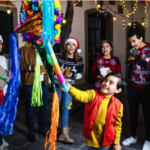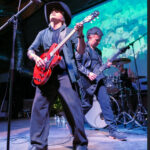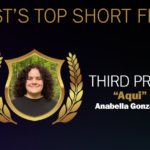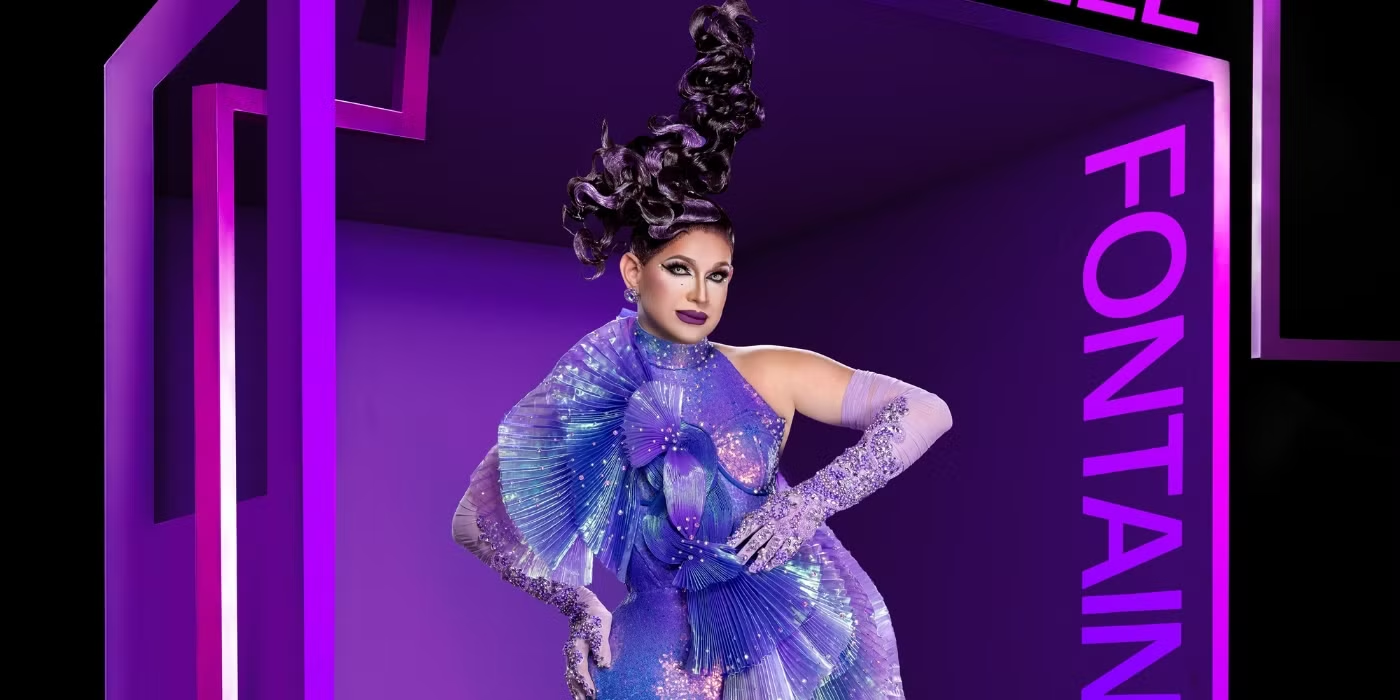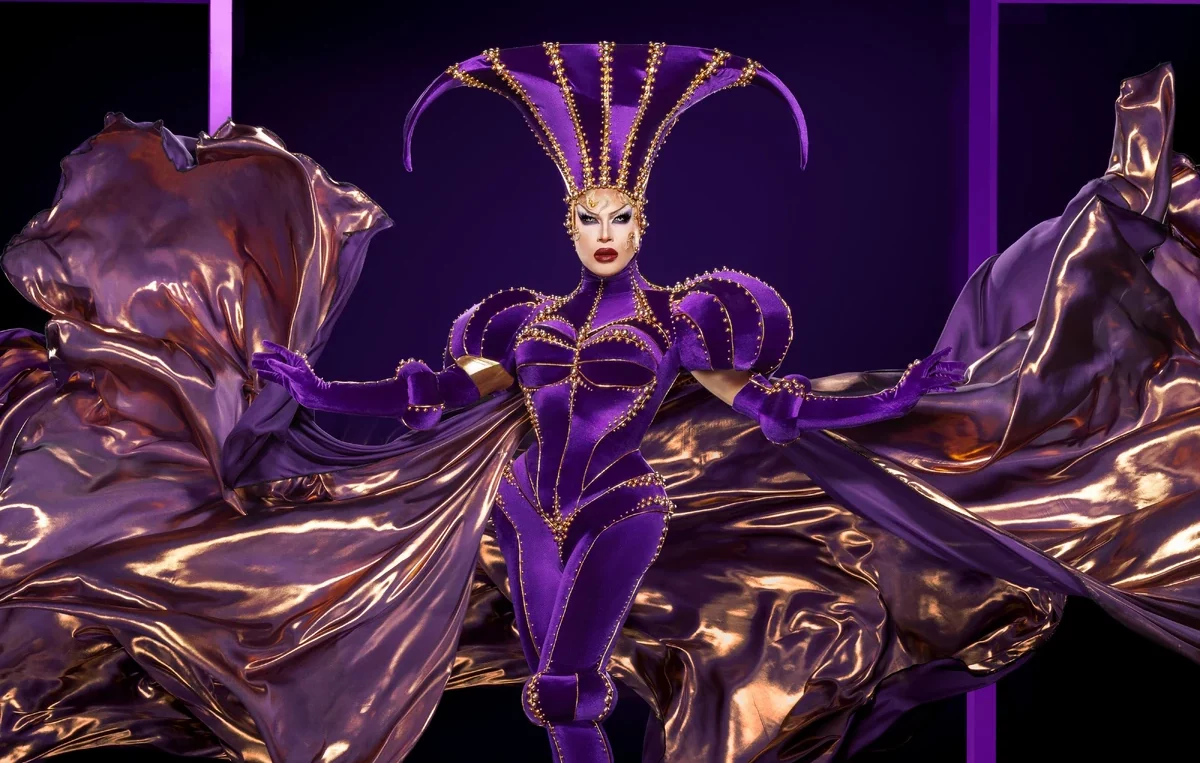The Juárez Family (from left: Flaco, Cecilia, Tacho and Alan) at Cecilia’s 40th birthday party. Credits: Rodrigo Dorfman
Intimately capturing an undocumented family living in North Carolina, Bulls and Saints, directed by Rodrigo Dorfman, carves out the Latinx community in the rural South. By following Tacho and Cecilia as they work in the U.S. and save what they can for a home back in their homeland of Michoacán, Mexico, Dorfman’s portrait explores themes of reverse migration as it shows a desire to return home and reconnect with their community.
Instead of telling the migrant story of coming to the U.S. for a “better life,” Dorfman shows a family that always has home in mind, putting their energy into returning back to Mexico. While Tacho and Cecilia live in the U.S., though, the family is connected to the Latinx migrant community in North Carolina by participating in bull rodeos, religious activities, and cooking traditional Mexican food.
I got to interview Dorfman about his Chilean background’s influence on capturing the community, as well as his experience creating the 52-minute film, a process that took seven years. Exiled from Chile in the 1970s and moving from Argentina to Cuba, Paris, and Amsterdam before settling in the U.S. in North Carolina, Dorfman said he felt disconnected from his Latinx community until the Great Latino Migration, “brought it to my doorstep.” His experience is reflected beautifully in the film, attentive to Tacho and Cecilia’s deepest longings for home.
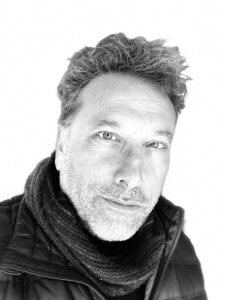
How does your cultural background allow you to create documentaries and connect with your subjects?
The act of documenting and making movies as an act of community-making was a way to belong in the world. After 10 years of exile, I went back to Chile and I worked with an underground news-gathering agency that made documentaries about the lives of everyday people circumventing the censorship of the military regime. Those videos were made to show a reality you couldn’t see on TV because it was censored.
I participated in that for six, seven months. That was extraordinary because I was able to participate in creating stories that were not allowed, but also being with people whose stories you never see. We would take these videos all about people in rebellion, culture, resistance, art, politics, and religion.
Under the cover of night, we would go into a church in a shanty town. We would be 100 people gathered illegally and sit and watch these videos of themselves resisting. I remember sitting there, I’m 18 years old, and having a revelation that that’s the whole point, to have people see themselves in images that they don’t usually see themselves in.
It created a space where people could come together and have conversations about the future of democracy, about civil society in ways that were not allowed in other spaces. That part of filmmaking, both as an act of creativity but also [as] a community gathering, where people can come together and have conversations that are essential for their identity and survival, is at the heart of my matrix. This was in 1995, and ever since I’ve always been following that model.
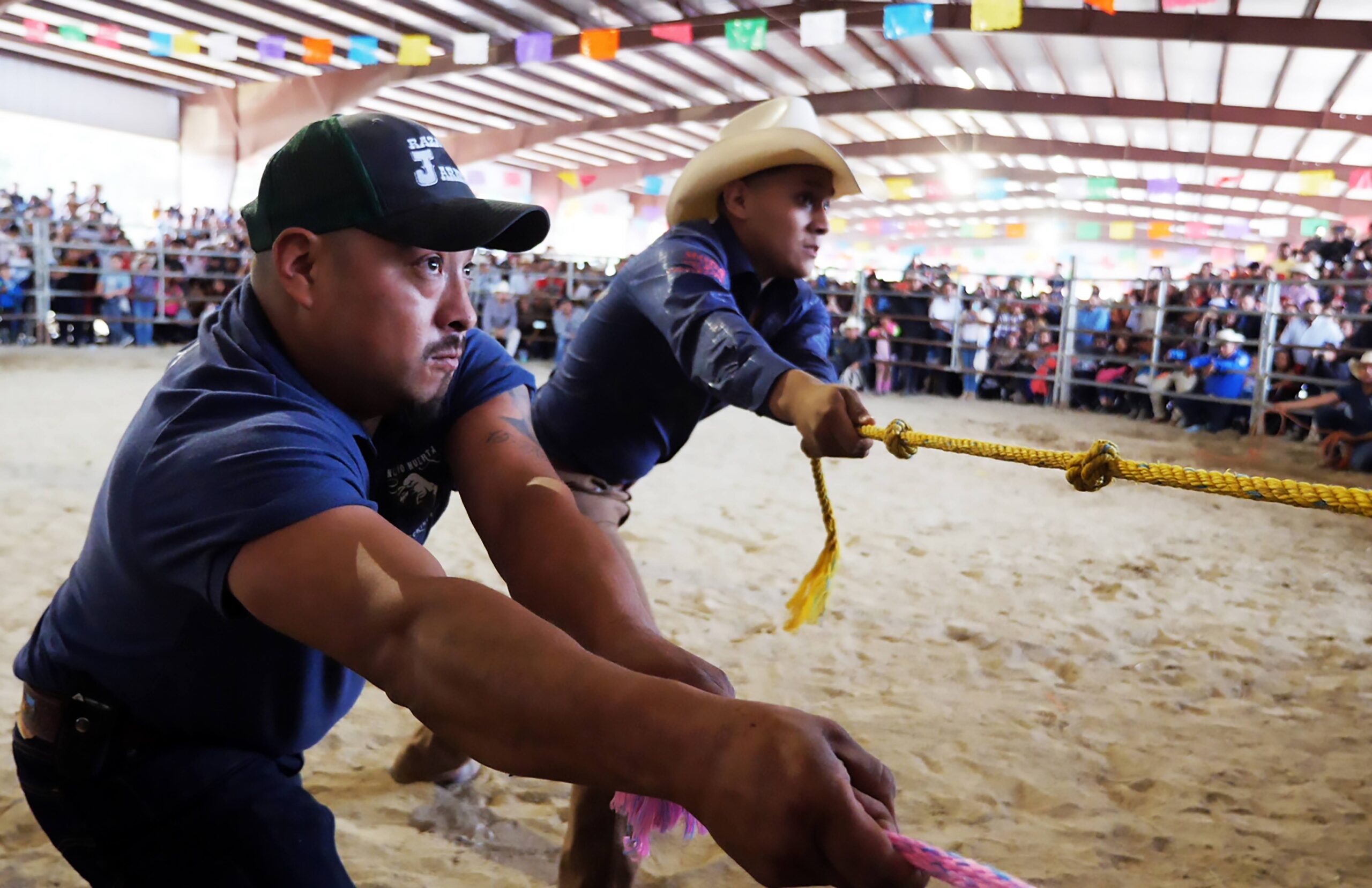
Why did you decide to focus on Tacho and Cecilia?
It was by luck. My producer, Peter Eversoll, invited me to a jaripeo. It’s a whole universe that exists right around the corner from your house. It’s part of the South experience of the Latino migrants of the South that’s radically different from any experience elsewhere.
I was really attracted by the jaripeo world, music, atmosphere and bull riding. Tacho was one of the bull handlers, and I got to meet him. He invited me to his son’s bull riding quinceañera. We filmed that, and we were originally going to shoot something about quinceañera, but I liked Tacho’s story because of the fact that Tacho could not go back after his father was murdered.
I felt an affinity as a Chilean whose dad was on the run from the military police. We found this affinity together because of a shared longing of not being able to come back. Even though I can’t go back to Chile, it’ll never leave you, the experience of being stuck in a golden cage.
Why do you think Latinos want to feel close to our own culture?
I can only speak for North Carolina. Many of them have only been in the U.S. for 10, 20 years. There’s a very intense need to be connected because you haven’t been here for 300 years. You haven’t had time to assimilate, learn English, change your last name, or forget Spanish. To me, their strong bond to the culture is a survival mechanism. When they came here, there was no receiving community. If you arrive in L.A., there’s millions who speak Spanish. Here there was no one.
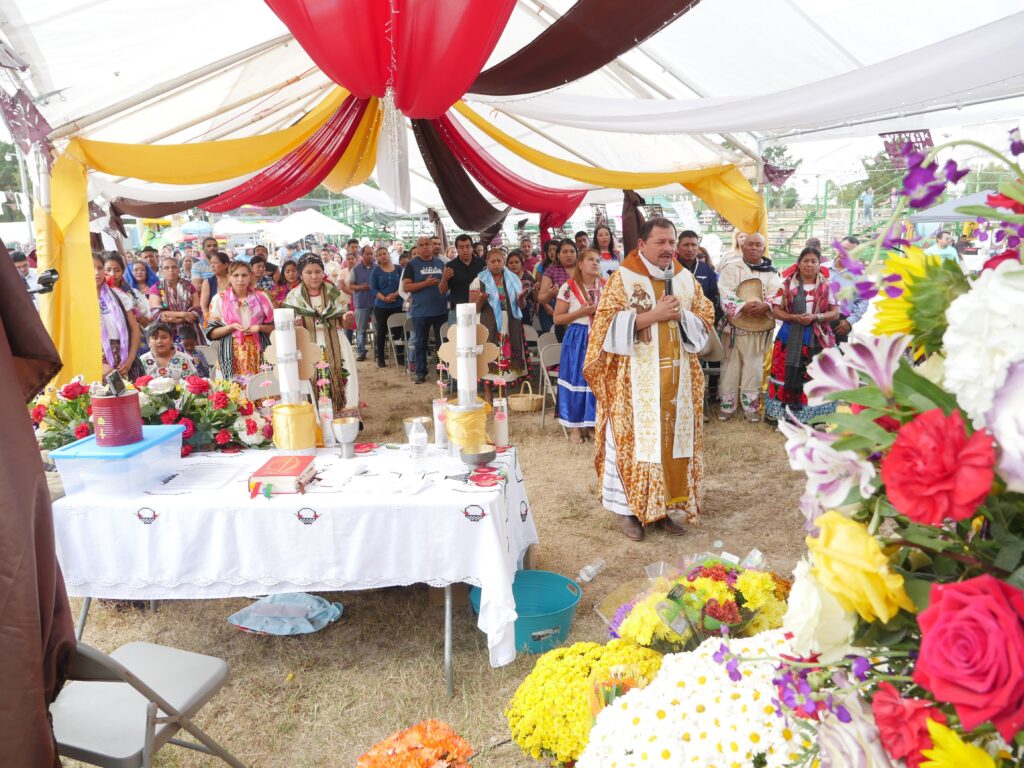
Why is showing Tacho and Cecilia connecting to other Latinos in North Carolina important to the story?
This story is specific to the American South and to the history of the last 20 years. It’s a very new community. They want to be seen, and they want people to see how strong they hold on to their traditions, while at the same time being successful here.
You can do both – you can hold on to your traditions and still be part of the American dream in terms of economics, even though maybe half of them are undocumented. They’re very successful, hardworking, and proud. Even though it’s happening in the South and very specific, many people will feel inspired by the possibility of reconnecting with your roots because a lot of the Latino population is second, third generation.
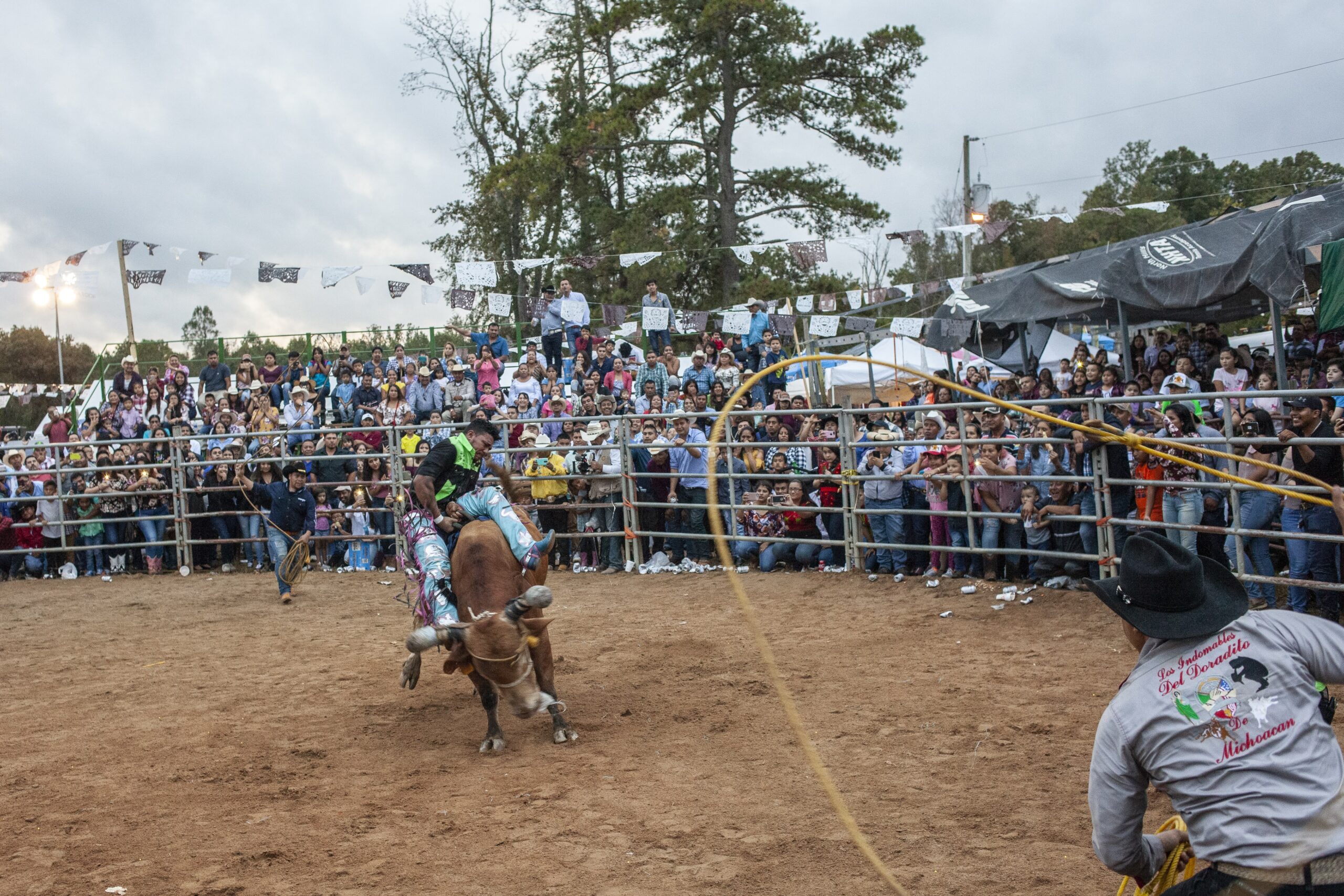
Why do we need more stories with themes of reverse migration?
Reverse migration is tricky in the sense of this story. If there was a way for Tacho and Cecilia to have papers, they would leave and be able to come back. The reason they’re trapped here, and why there’s millions like them who are trapped, is because if they leave, they can’t come back.
It’s too dangerous and they leave their children, grandchildren, and the life they built for themselves here. The film shows a desire to go home and the price you pay to go home. Tacho and Cecilia are holding on to something so strong because, for them, the American dream was to come try to make a living and build a home in Mexico.
When people say Mexicans are hardworking, that’s also a code word for exploitable. Tacho and Cecilia are basically saying capitalism is not working for them. The most important part of the film is when Cecilia says I left because I wanted something big. I wanted to get paid. But what I didn’t realize is that what I was losing was a sense of well-being and of being at peace.
She expresses something felt so deeply, which is ‘I’m not happy with the way the economic system is in the U.S. It’s killing me softly.’ These folks are saying, ‘We want out because we want to live a more healthy life, and that we can do in Mexico.’ You pay a price, which is that you live in two places at once, and that’s not an easy thing to do.
That’s almost ultimately the migrant experience. It’s a story that hasn’t been told as much and will have an impact on policy when people start seeing that idea of the golden cage. There’s a way for people to get papers and also become hardworking. It needs to come because it’s a tragedy that Tacho cannot go to Mexico and bury his dad.
How has creating documentaries allowed you to reconnect with your background?
I’ve always felt like an alien, [a] foreigner, or an immigrant, no matter where I went. I’ve always had this sense of observation and wanting to belong, whatever that illusion means – to belong. I found that documentary filmmaking, the way I like to work with it, has given me a place in the world, a sense of belonging, and a way to manage the fractureness of being a migrant.
Bulls and Saints premiered Sept. 18, 2023, and will be released by POV to stream until December 17, 2023, at pbs.org, and the PBS App.


